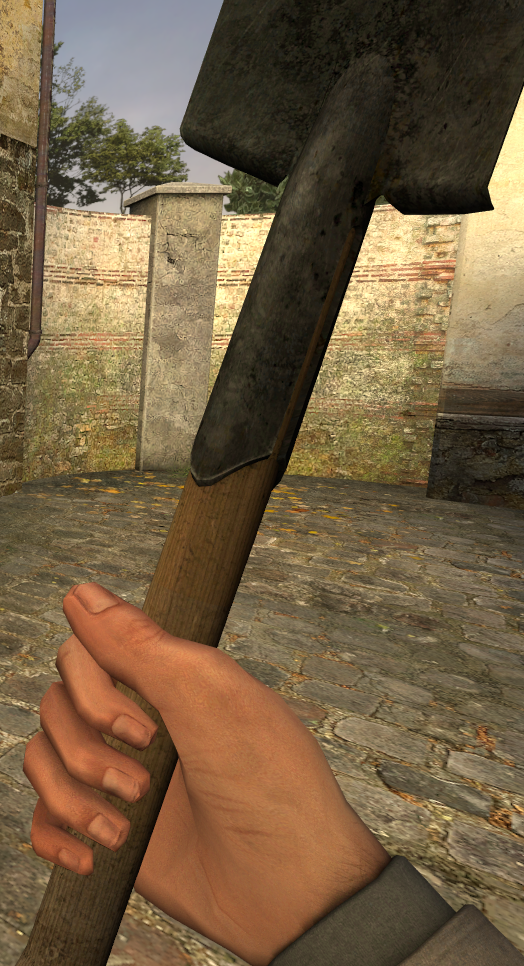

Soldiers and laborers worked with shovels and picks tobuild ramparts (walls), parapets (slopes), and bombproofs (shelters)following a standard procedure for construction. Inexpensive and readily available, dirt produced very strongstructures that could absorb the impact of projectiles better than brickor stone masonry. Military earthworks are fortifications constructedfrom dirt. As a result, Washington, D.C, becameone of the most fortified cities in the world. By the end of the Civil War, the "Fatherof the Defenses of Washington" had directed the construction of 68forts, 93 gun batteries, 20 miles of rifle pits, and 32 miles ofmilitary roads around the capital. Rifle trenches linked each strategic site anddoubled as communication lines. Armedwith engineers, soldiers, former slaves, and other laborers, Barnarddeveloped a connected system of fortifications occupying every prominentpoint around Washington. Barnard, a West Point graduate and respectedexpert on coastal fort construction, accepted the massive task. President AbrahamLincoln, Washington, D.C, July 10, 1864įortifying the nation's capital became the Union'sgreatest concern after the defeat at Manassas in the summer of 1861.Major General John G. Todayparks and woodlands occupy the heights where heavy guns once scanned thehorizonand people stroll, hike, and bike where courageous soldiersonce stood guard over the nation's capital.īy latest accounts the enemy is moving onWashington. Decades later, a plan to connect the historic siteswith a scenic automobile route paved the way for their preservation.Although some elements of the Civil War Defenses of Washingtoneventually surrendered to time and urbanization, many fortifications andassociated lands remain protected within the National Park System. Most of the fortifications were dismantled orabandoned by 1866. Hospitals and settlements sprang up nearby, providingshelter and work for many, including African American "contrabands" ofwar. As warbroke out in 1861, Union forces quickly built a ring of earthenfortifications around the nation's capital and moved massive cannonsinto place. TheLincoln Administration realized the city urgently needed a strongershield of defense, prompting the Federal government to seize strategiclands with views of essential roads, bridges, and waterways. As the prospect for war grew,tensions escalated, and Washington, D.C, lay vulnerable to attack. In i860 slavestates sympathetic to the Confederacy surrounded the District ofColumbia, which was protected only by the brittle brick bastions of FortWashington, 16 miles south on the Potomac. High ground around Washington played a vital rolein protecting the nation's capital during the Civil War. Even more uncommon are the exceptional natural elementsand remnants of history located among the hills encircling the city.


DoD France Note: Site is closed, the link is a snapshot - French Day of Defeat:Source site.DoD Federation Note: Site is closed, the link is a snapshot - a web site dedicated to helping the Day of Defeat community.

Day of Defeat Directory Note: Site is closed, the link is a snapshot - a directory of custom maps, files and links to other Day of Defeat: Source and ProDoD sites.Sunlit games - Sunlit games DoD:S Map Downloads.dodbits - Bits and Pieces for Day of Defeat:Source, Maps, HUDs, Tutorials, Map Models downloads and support for other Valve games.
#Day of defeat source trench circle map mod#


 0 kommentar(er)
0 kommentar(er)
